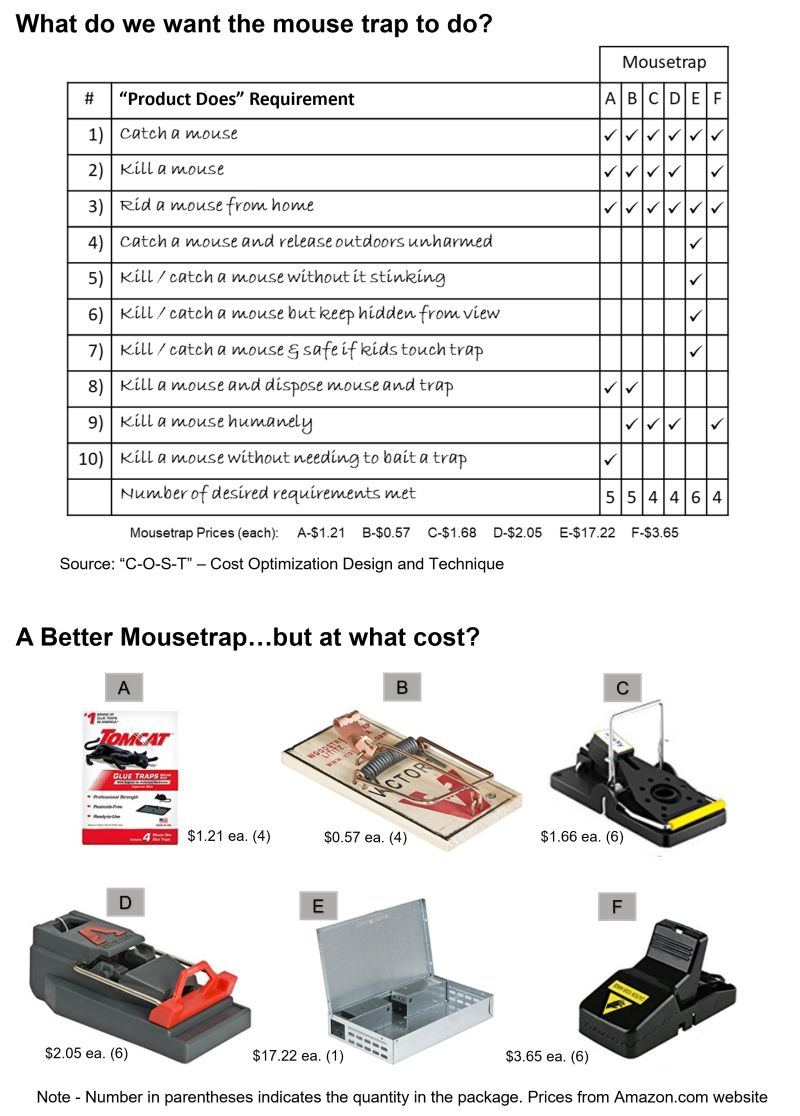
Clearly Defined Product Requirements are Valuable to a Product’s Design
By Craig Theisen
Product requirements can be in the form of specifications, desired functions, appearance, shape, geometry, regulations, and other items companies want included in a product.
Product requirements relating to what is desired for the product to do, in other words “product does requirements,” are valuable if they are defined first.
Consider a mouse trap. In the illustration, 10 potential “product does” requirements are listed. Each requirement drives a feature or function in the product design. For example, requirement 10 is to kill a mouse without needing to bait a trap. Trap A is the only one of the six shown that doesn’t require putting bait in the trap. However, the mouse remains stuck in the trap until it dies of thirst. It would not meet requirement 9, to kill a mouse humanely, if requirement 9 was desired.
If it was desired to catch a mouse and then release it unharmed outdoors, Trap E is the only one for that requirement. To achieve that, the trap is more complicated, and this complication is expensive at $17.22 each. Trap E also meets more of the 10 requirements than the other traps. Product managers need to decide if there is a market for a trap that meets all these requirements.
Once the “product does” requirements are defined and prioritized, engineers can design the product in a way to create most value for customers, especially when competing with products that do the same thing. It is also beneficial to designate clearly what the product does not need to do.
Traps C, D, and F have the same “product does” requirements. But F costs more than twice as much as C. Customers must decide if the cost difference is worth paying.
Product B is the famous Victor trap which has sold over one billion units. At $0.57 each, and with its ability to meet 5 “product does” requirements, it isn’t surprising it is the best-selling mousetrap of all time.